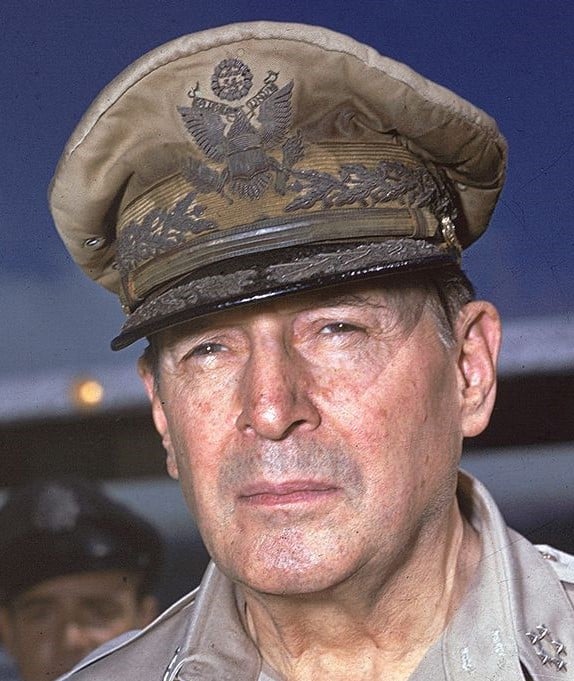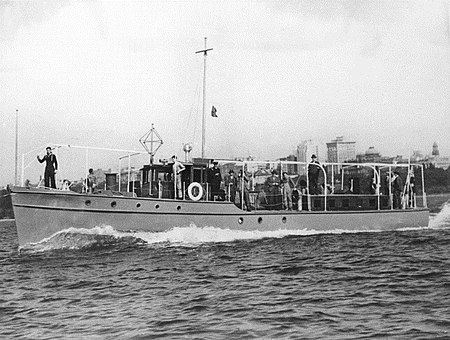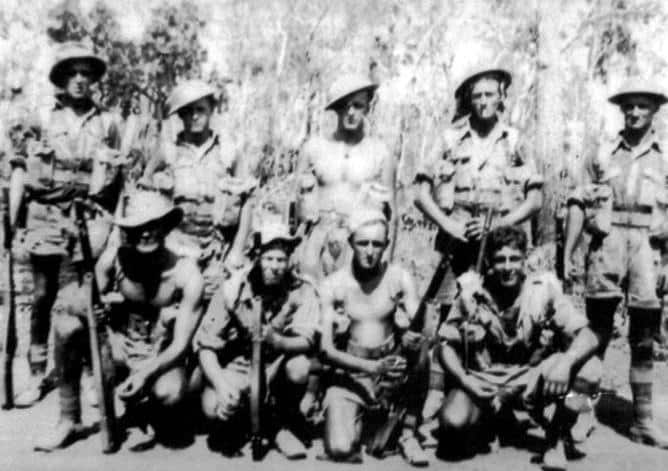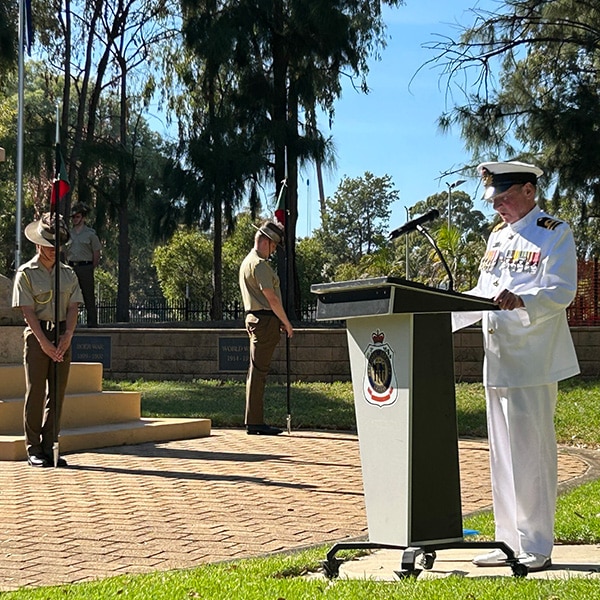General Douglas McArthur, (born January 26, 1880, Little Rock, Arkansas, U.S. and died April 5, 1964, Washington, D.C.)
McArthur rose to become a 5 Star US Army General who commanded the South Pacific Theatre during the Second World War, administered post-war Japan during the Allied occupation which followed, and led United Nations Forces during the first nine months of the Korean War.
Early Life
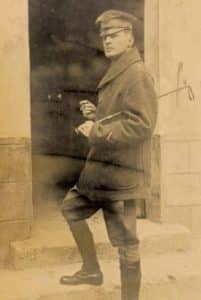
McArthur was the third son of Arthur McArthur, the US Army’s Senior Ranking Officer, and Mary Hardy McArthur, an ambitious woman who strongly influenced Douglas.
He graduated from West Point in 1903 with the highest honours in his class and served the next 10 years as an aide and a junior engineering officer. This was followed by four years on the General Staff.
He spent several months with the U.S. troops that occupied Veracruz, Mexico, in 1914.
On the 42nd Division’s staff in 1917 – 19, McArthur was variously Chief of Staff, Brigade Commander, and Divisional Commander during combat operations in France during the First World War, and in the Rhine occupation which followed.
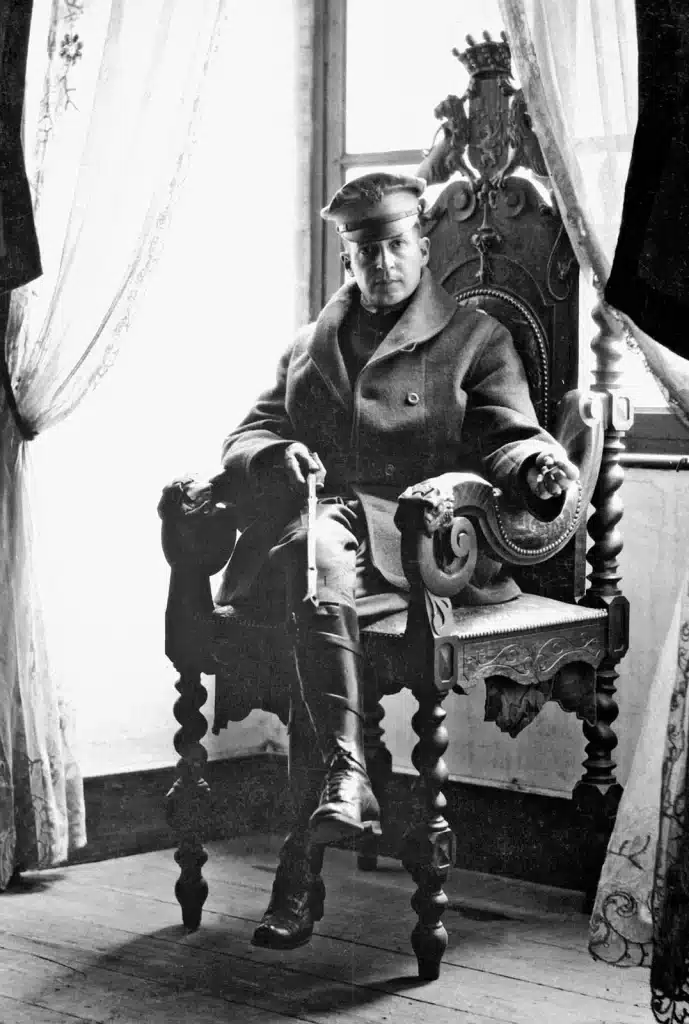
During the 1920s he initiated far-reaching reforms while Commandant at West Point, served on William (“Billy”) Mitchell’s court-martial, held two commands in the Philippines, commanded two U.S. Corps, and headed the 1928 American Olympic Committee. Having advanced in rank to Brigadier General 1918 and to Major General seven years later, McArthur was promoted to General when he was selected as the United States Army Chief of Staff in 1930.
His efforts as military head for the next five years were largely directed toward preserving the Army’s meagre strength during the Great Depression.
McArthur was widely criticized in mid-1932 when he sent regular troops to oust the Bonus Army of veterans from Washington.
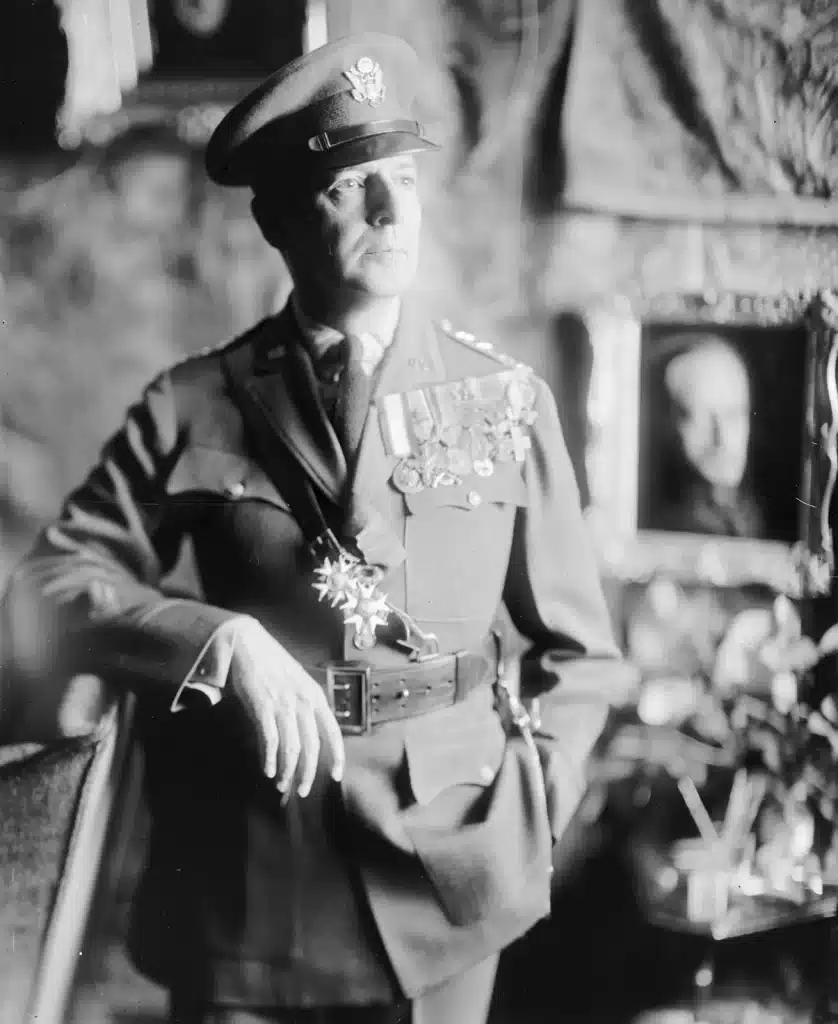
In 1935 – 41 he served as Philippines military adviser (and Field Marshal), endeavouring, despite inadequate funds, to build a Filipino Defence Force.
He retired from the U.S. Army in December 1937.
McArthur married Louise Cromwell Brooks in 1922, but the childless union ended in divorce seven years later. In 1937 he married Jean Faircloth.
Arthur, their only child, was born in Manila the next year.
Duty in World War II
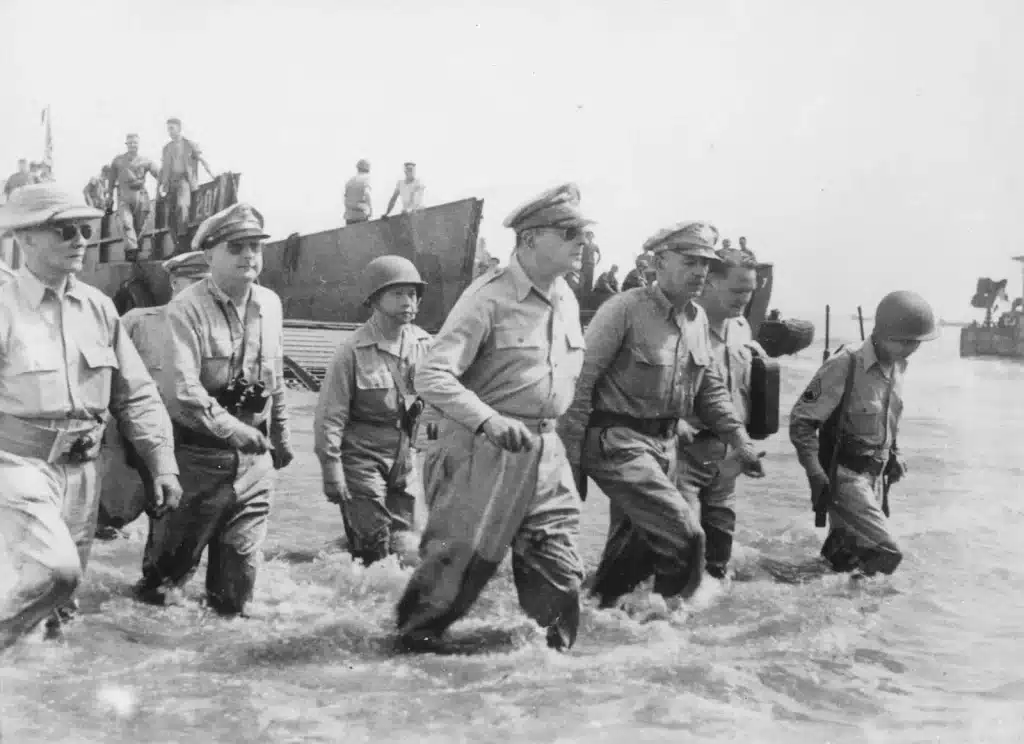
Recalled to active duty in July 1941, McArthur conducted a valiant delaying action against the Japanese in the Philippines after war erupted in December.
He was ordered to Australia in March 1942 to command Allied forces in the Southwest Pacific Theatre.
He soon launched an offensive in New Guinea that drove the Japanese out of Papua by January 1943. In a series of operations in 1943–44, McArthur’s troops seized strategic points in New Guinea from Lae to Sansapor, while capturing the Admiralty Islands and western New Britain.
The simultaneous northward movement of South Pacific Forces in the Solomons, over whom McArthur maintained strategic control, neutralized Rabaul and bypassed many Japanese units.
After winning a decision to invade the Philippines next rather than Formosa (now Taiwan), McArthur attacked Morotai, Leyte, and Mindoro in autumn 1944.
Not until the Leyte operation, did he have overwhelming logistical support; his earlier plans had been executed despite inadequacies of personnel and matériel and with little assistance from the Pacific Fleet.
McArthur seriously questioned his superiors’ decision to give priority to the European war over the Pacific conflict and to the Central Pacific Theater over his Southwest Pacific area.
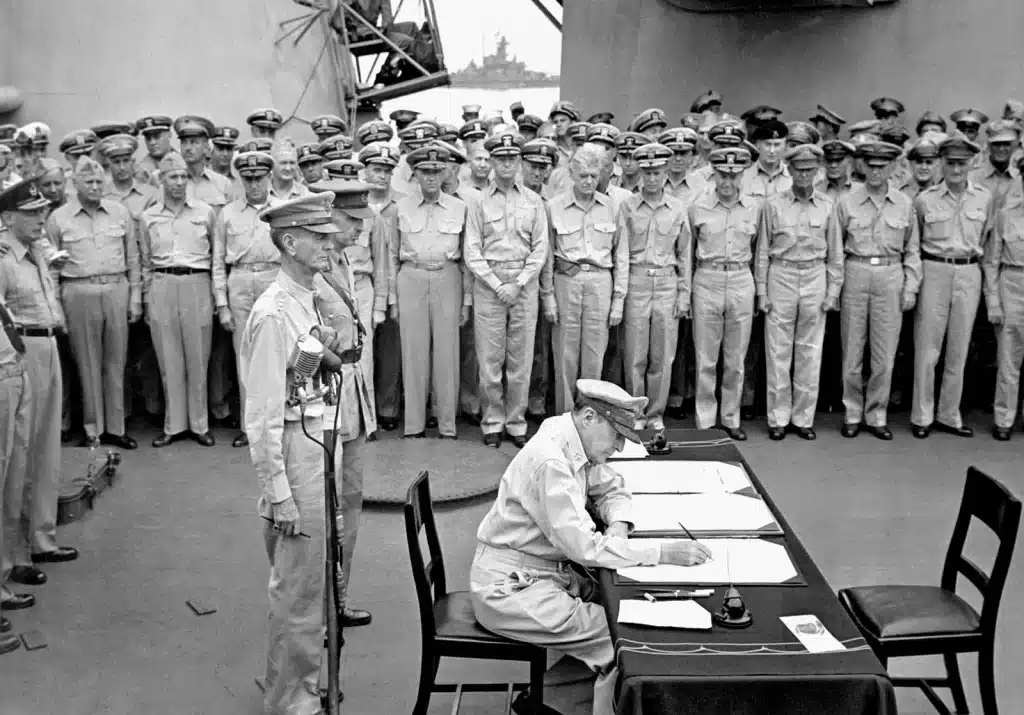
His largest, costliest operations occurred during the seven-month Luzon campaign in 1945. That spring he also undertook the reconquest of the southern Philippines and Borneo. Meanwhile, he left the difficult mopping-up operations in New Guinea and the Solomons to the Australian Army. He was promoted to general of the army in December 1944 and was appointed commander of all U.S. Army Forces in the Pacific four months later.
He was in charge of the surrender ceremony in Tokyo Bay on September 2, 1945.
As Allied Commander of the Japanese occupation in 1945–51, McArthur effectively if autocratically directed the demobilization of Japanese military forces, the expurgation of militarists, the restoration of the economy, and the drafting of a liberal constitution. Significant reforms were inaugurated in land. Redistribution, education, labour, public health, and women’s rights. While he was in Japan, McArthur also headed the Army’s Far East command.
UN Command during the Korean War
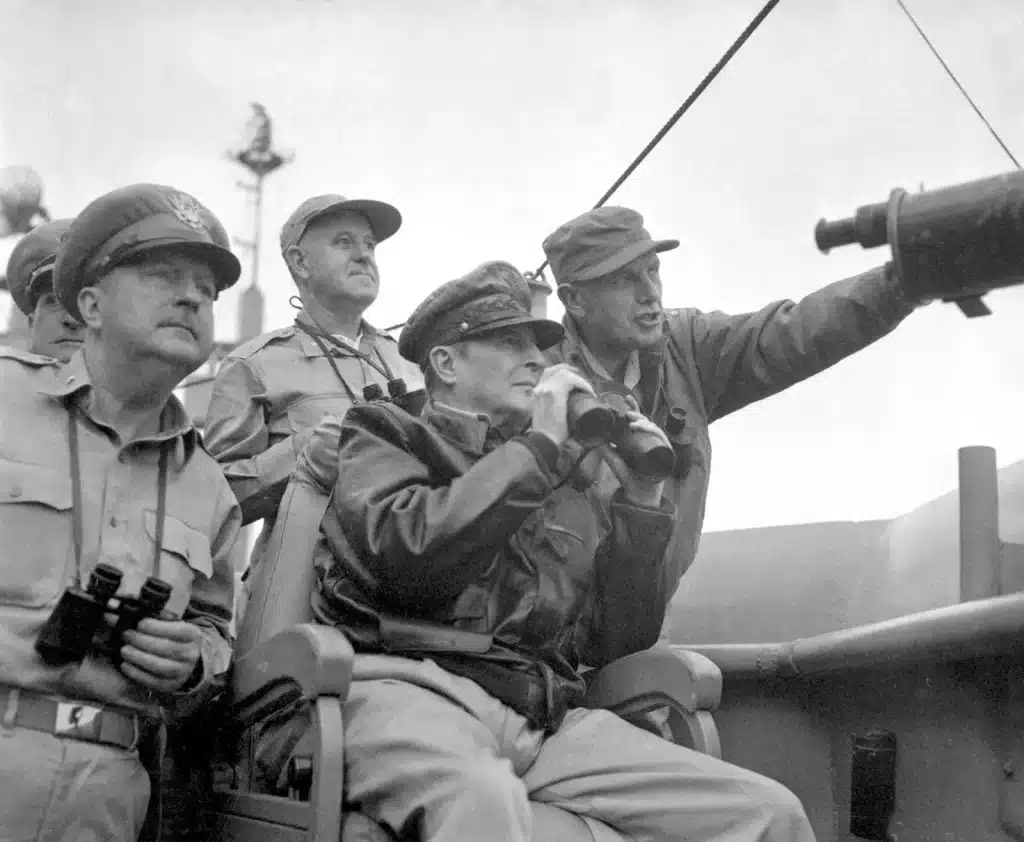
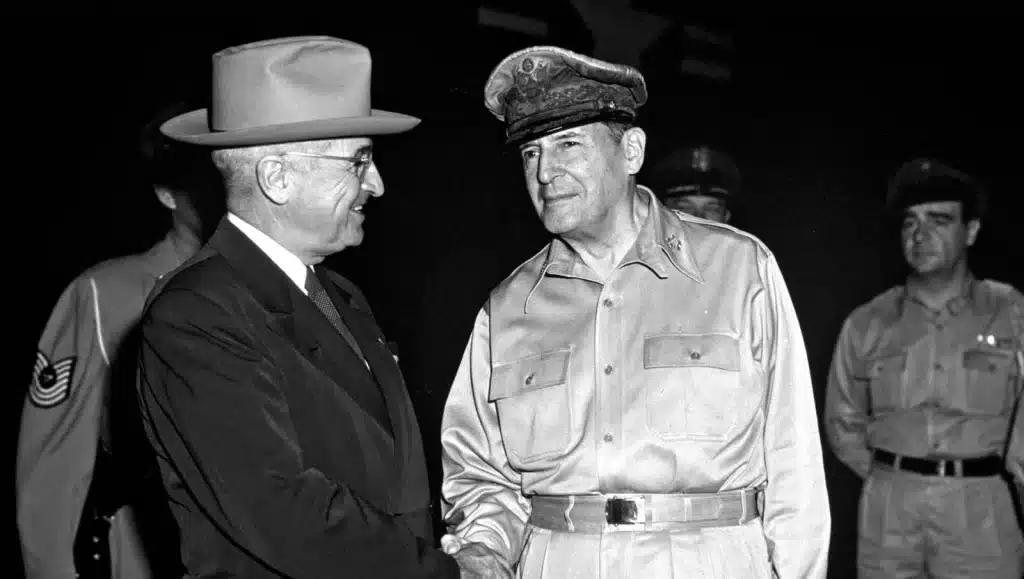
When the Korean War began in 1950, McArthur was soon selected to command United Nations forces there.
After stemming the North Korean advance near Pusan, he carried out a daring landing at Inch’ŏn in September and advanced into North Korea in October as the North Korean Army rapidly disintegrated.
In November, however, massive Chinese forces attacked McArthur’s divided army above the 38th parallel and forced it to retreat to below Seoul.
Two months later McArthur’s troops returned to the offensive, driving into North Korea again.
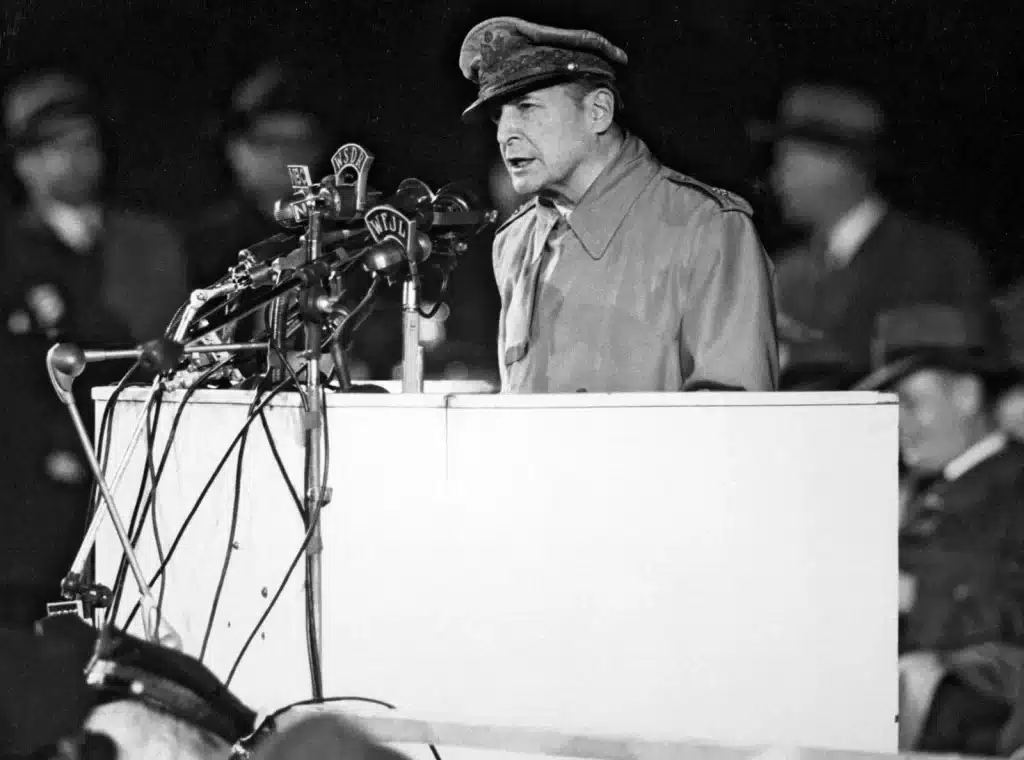
On April 11, 1951, Pres. Harry S. Truman relieved McArthur of his commands because of the general’s insubordination and unwillingness to conduct a limited war.
Returning to the United States for the first time since before World War II, McArthur at first received widespread popular support; the excitement waned after a publicized Senate investigation of his dismissal.
In 1944, 1948, and 1952, conservative Republican groups tried in vain to obtain McArthur’s nomination for the presidency. McArthur accepted the board chairmanship of the Remington Rand Corporation in 1952; thereafter, except for these duties and rare public appearances, he lived in seclusion in New York City.
He died in Washington, D.C., in 1964 and was buried at Norfolk, Virginia.
In personality McArthur was enigmatic and contradictory. To many he seemed imperious, aloof, egotistical, and pretentious. To others, especially his headquarters staff, he appeared warm, courageous, unostentatious, and even humble.

